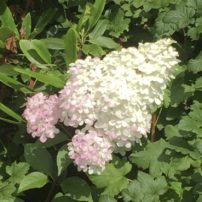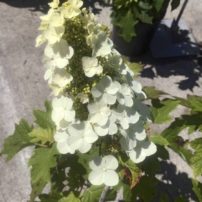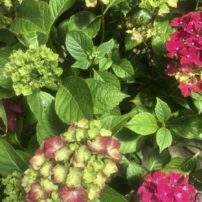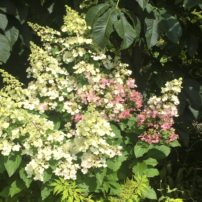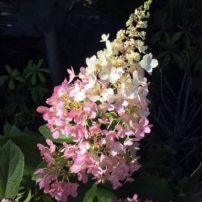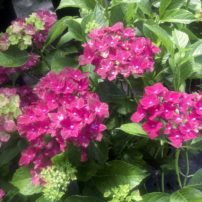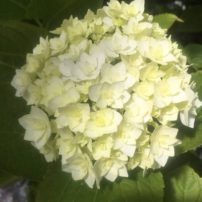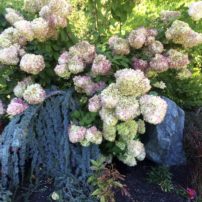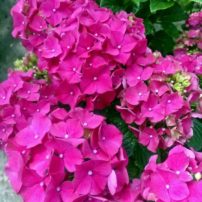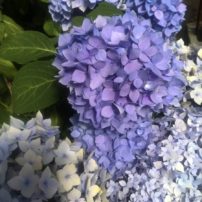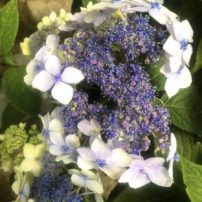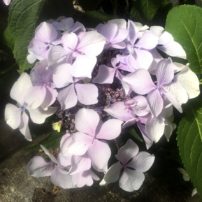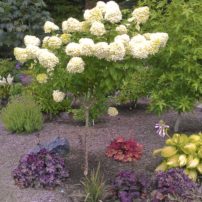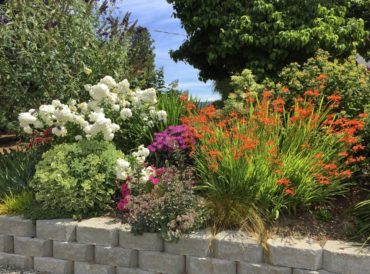 Many years ago, your grandma probably grew a hydrangea in her garden, but modern plant breeders have moved beyond simple, white snowballs. These flowering shrubs are becoming popular again, as shown by the many colorful cultivars currently being offered for sale.
Many years ago, your grandma probably grew a hydrangea in her garden, but modern plant breeders have moved beyond simple, white snowballs. These flowering shrubs are becoming popular again, as shown by the many colorful cultivars currently being offered for sale.
Once you know your intended planting location, variety type can be selected. They work equally well as a specimen plant or as a mass planting of one variety.
Hydrangea Macrophylla
These are the most common and familiar types currently available. They have big leaves and stems that set buds in the fall. Macrophylla are divided into three groups: the nearly round flowered mopheads, snowballs and the large, flat flowered lacecaps.
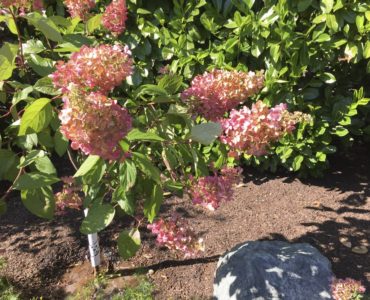 Since this group flowers on old wood, prune after the blooms fade. They really don’t need much pruning; just remove a few old stems down to the ground and deadhead every year.
Since this group flowers on old wood, prune after the blooms fade. They really don’t need much pruning; just remove a few old stems down to the ground and deadhead every year.
Hydrangea Paniculata
Paniculatas are the types that like a sunny location. The large flowers have a pyramid shape that is taller than it is wide. As a group, they bloom later in summer to fall.
Oakleaf Hydrangea
Oakleaf hydrangeas are recognized by the shape of the foliage. They are native to the southeastern United States and are the one group that are drought resistant given morning sun and afternoon shade.
They bloom on the prior year’s cane growth, so pruning should be done when deadheading after the bloom cycle.
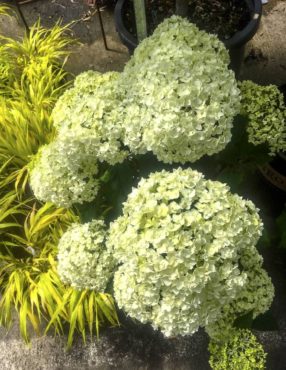
Cultural Notes
Most hydrangeas are not known to be drought-tolerant plants. When making a purchasing decision, it is important to know where it will be planted and how much sun or shade the plant will get. Macrophyllas can wilt in full sun unless the variety is specifically known to tolerate sun.
Planting site:
- Most prefer protection from hot afternoon sun.
- Plant in compost-rich, well-drained soil.
Mature plants:
- Fertilize with a type specified for acid-loving plants in early spring and after flowering.
- Flower color will respond to the soil pH but you cannot change the white blooms.
Hydrangeas are generally disease- and insect-free in our area.




